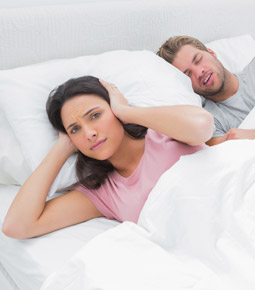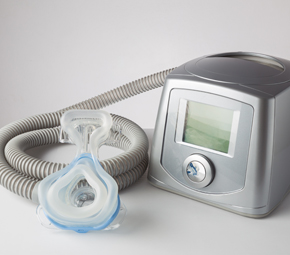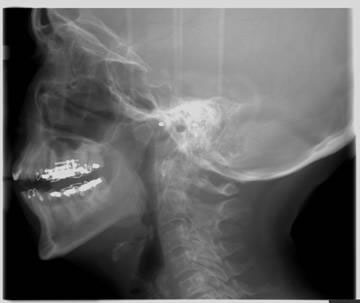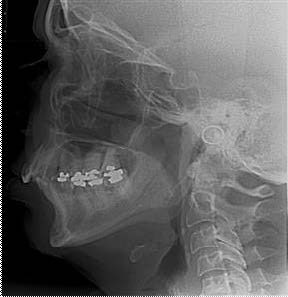
Mall of Georgia Sleep Therapy has provided personalized dental care for thousands of families. Our patients go to great lengths in order to experience the warm, individualized care we provide. We pride ourselves in offering a variety of services and using cutting-edge equipment and techniques.
Click the Services below for more information on each subject.
back
Snoring
Snoring is a common sleep disorder among people of all ages and of both genders. When one snores, they create a noisy snorting, grunting or breathing sound during sleep. Snoring can cause disruptions in your own sleep or in your bed-partner’s sleep. These disruptions can lead to irritability, muddled thinking, illness, poor performance at work and drowsy driving. Studies have also shown the effects of snoring to cause high blood pressure, a known risk factor for stroke, heart disease, kidney disease and dementia. Snoring can also deprive the brain from needed oxygen, which can damage carotid arteries and restrict blood flow to the brain. If your bed-partner is constantly being awakened due to your snoring, it can also create a strain on your relationship.
Treatment for snoring can vary depending on each patient’s unique situation. Common treatments to snoring include:
- Avoid sleeping on the back
- Raising the head of the bed by 4 inches
- Avoid drinking alcohol or eating a heavy meal within 3 hours of bedtime
- Avoid relaxation medications
- Stop smoking
- Lose weight and exercise more
- Ask your dentist about surgery or an oral appliance.
If you are experiencing extreme snoring, you may be suffering from sleep apnea. Please contact our office so we can discuss your treatment options.
back
Lifestyle
Sleep Positioning Training
Obstructive sleep apnea can be related to sleeping on one’s back. Patients experiencing obstructive sleep apnea are encouraged to sleep on their side. Together we can discuss various methods to get a good night’s rest while helping you remain asleep on your side.
Behavior Modification
One’s physical condition and health habits can impact their sleep. Sleep apnea is often treated in obese patients through weight loss. Limiting the use of sedatives and muscle relaxants, reducing alcohol consumption and quitting smoking can also treat sleep apnea.
back
CPAP

CPAP stands for continuous positive air pressure and helps people with obstructive sleep apnea breathe more easily at night. This treatment uses mild air pressures applied through a nasal mask to keep the airways open during sleep. While sleeping with a mask may take some time to get used to, but is very effective. However, for patients not able to wear a CPAP mask at night, we also provide oral appliances.
back
Oral Appliance Therapy
Video - Oral Appliance Therapy
About - Oral Appliance Therapy
Oral appliance therapy is a common method used to treat obstructive sleep apnea — a sleep disorder caused by the tongue or jaw or some other oral obstruction blocking the airway during sleep. The oral appliance is worn only during sleep and is custom-fit to sit comfortably in the mouth. The appliance is built to help keep the jaw in the forward position and the tongue from falling back, allowing the airway to remain open during sleep.
Why Oral Appliance Therapy is a Number One Choice:
- Comfortable
- Easy to wear
- Effective
- Non-invasive
- Portable
- Easy to care for
In order to create your oral appliance, Dr. Vancil will conduct a clinical evaluation and take digital or physical impressions of your teeth. These impressions or models are then used to create your appliance in a dental lab. On your next visit, your oral appliance will be fitted and adjusted in your mouth to make sure it is comfortable and effective. Dr. Vancil will teach you how to clean and care for your appliance. Follow-up visits will be scheduled to check the condition of your appliance and ensure its effectiveness.
Types of Oral Appliances
There are a variety of oral appliances that are successful at treating obstructive sleep apnea. At our office, we offer a range of options so you can pick the appliance that best meets your needs.
SomnoDent Oral Device
The SmnoDent is an oral sleep appliance with an upper and lower splint (two separate parts) that cover the teeth and advance the lower jaw forward throughout treatment. The forward movement of the jaw allows the airway to open better, making it easier to breathe and get a deeper night's rest.
Herbst
The Herbst Appliance is another oral appliance used to treat bruxism, chronic snoring and obstructive sleep apnea. It is different from other appliances in that it allows patients to move their jaw and teeth more freely and comfortably without disengaging the appliance.
SomnoDent Flex
The SomnoDent Flex is an oral appliance made with unique SMH Flex material. This material has a soft inner liner, allowing the patient to maintain better retention while receiving premium comfort. The devise is designed to fit comfortably in a variety of mouths, including patients with short teeth, little undercut or crown/bridge work.
SomnoDent Fusion
The SomnoDent Fusion is a devise that fuses wing calibration and screw calibration technology together to increase the upper airway and reduce collapsibility of the throat. The device is made up of upper and lower dental trays with a wing component that allows for normal mouth movement during sleep. The devise is easily adjustable and made with SMH Flex material that creates more comfort for patients.
Medical Dental Sleep Appliance (MDSA)
The Medical Dental Sleep Appliance is a devise that holds the jaw and tongue forward during sleep to open the airway and prevent the throat from collapsing. It has been an effectively proven method for treating snoring and mild to moderate sleep apnea.
Elastic Mandibular Advancement (EMA)
The Elastic Mandibular Advancement devise is one of the more comfortable oral appliances used. The thin and comfortable material that makes up this devise on the upper and lower teeth is attached together with elastic bands. These bands allow for easy motion and can easily be adjusted for better comfort and fit.
Silent Sleep
If you’re needing to treat a simple snoring issue, the Silent Sleep may be the best treatment option for you! This non-custom appliance is worn during sleep and sits comfortably in the patient’s mouth. Because this devise is not custom-made there is no need for impressions and models, making the product less expensive than its competitors. On the other hand, the Silent Sleep cannot be adjusted by the patient, meaning more dental visits may be required.
Oral appliances are removable devices used at nighttime to prevent the collapse of the tongue and the soft palate onto the back of the throat. These are attached to the upper and lower teeth, and then mechanically move the lower jaw forward to keep the airway open during sleep. The objective of these devices is to improve the patency of the upper airway during sleep by increasing its dimensions and reducing its collapsibility. Several anatomic changes occur as a result of the mechanical advancement of the mandible and tongue. The Lateral x-ray below shows a patient with a narrow airway (left), the same patient wearing an oral appliance improving the airway patency (right).


If you have any questions or concerns about oral appliance therapy or would like to schedule a consultation, please call our office!
back
Surgery
Surgical treatment may be required to treat sleep apnea. At our practice, we will work with and refer you to surgeons to provide a variety of safe surgical procedures including:
- Pillar Procedure - placing implants into the soft palate
- Genioglossus Tongue Advancement - adjustment of the tongue
- Hyoid Suspension - pulling forward the hyoid bone
- Somnoplasty - reducing the volume of the soft-palate tissue
- Uvulopalatopharyngoplasty (UPPP) - removal of the soft palate and uvula
- Maxillomandibular Advancement - adjustment of the upper and lower jaws
If surgery is necessary, we will work closely with you to prepare for your treatment and set you up with a trusted ENT or oral surgeon. You will be in good hands and receive the best care possible.
back
Insomnia
Are you having difficulty falling asleep or staying asleep during the night? If so, you may have insomnia. Insomnia is one of the most common sleep disorders in which a person has difficulty falling or staying asleep. Insomnia can cause a person to experience fatigue, low energy, difficulty concentration, mood disturbances and decreased performance in work or at school. Insomnia is a common problem for adults and can fall under two categories.
Acute Insomnia is difficulty sleeping due to life circumstances. Examples can include trouble sleeping before a big test or important meeting or after receiving bad news. Acute Insomnia typically does not require treatment.
Chronic Insomnia is defined as disrupted sleep that lasts at lease three nights per week and
for at least three months. Chronic insomnia can be caused by a number of factors including unhealthy eating or sleeping habits, changes in work schedules or lifestyle patterns, or other physical disorders or illnesses. Treatment is often required to help patients recover for chronic insomnia.
back
Sleep Apnea
Information on the Home Sleep Test that we use.
While snoring is a common symptom, sleep apnea is much more serious than a simple snore. It is a sleep disorder in which breathing periodically starts and stops during the night, and it can have a serious impact on your health. Sleep apnea has been linked to diabetes, stroke, heart disease and more. You may have sleep apnea if you experience loud, recurring snoring, daytime drowsiness, fatigue or choking or gasping for air in your sleep.
